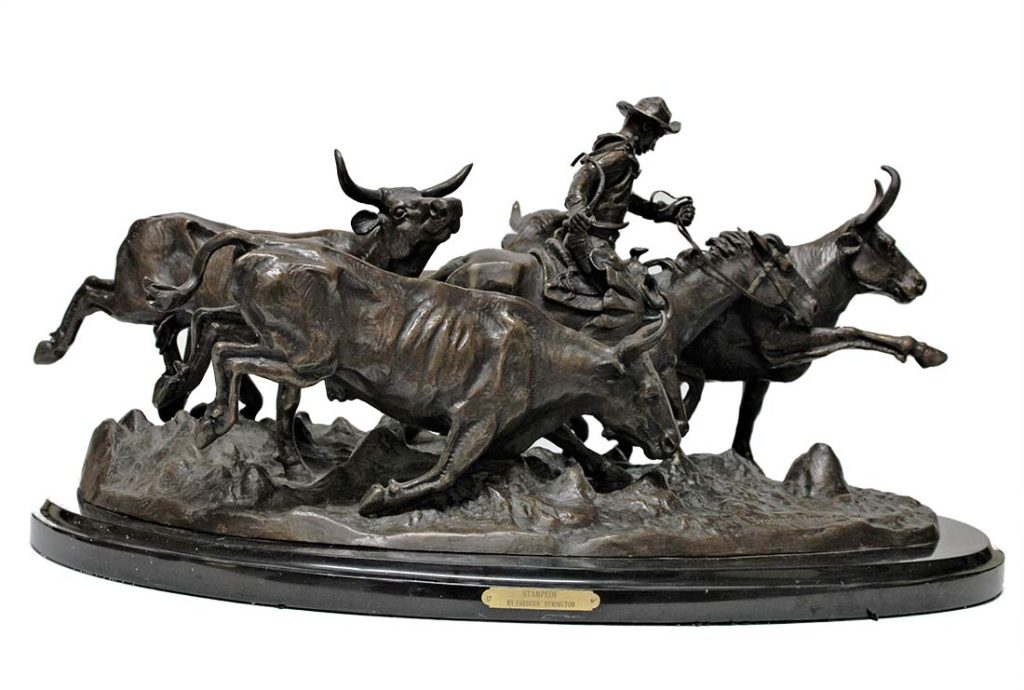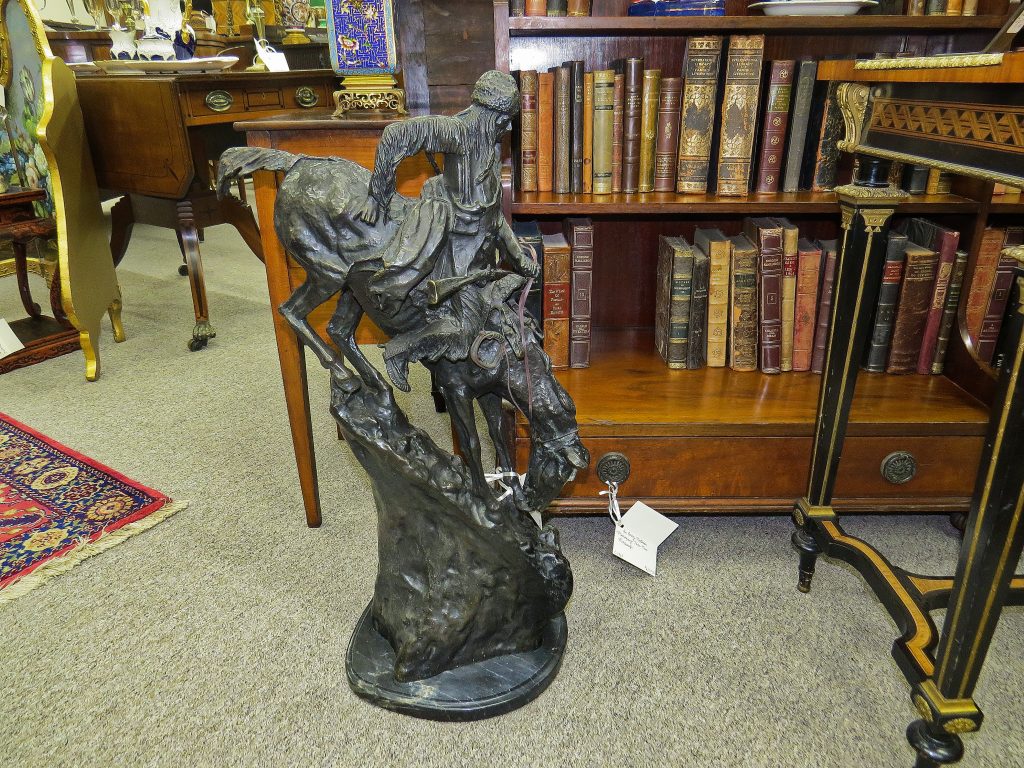In the realm of American Western art, the name Frederic Remington stands tall as a beacon of creativity and mastery. Born in 1861, Remington emerged as one of the foremost artists of the late 19th and early 20th centuries, celebrated for his ability to depict the rugged beauty and adventurous spirit of the American West. While Remington excelled in various artistic mediums, frederic remington bronze hold a special place in the art world, showcasing a unique blend of realism, emotion, and storytelling.
Frederic Remington’s journey into the realm of bronze sculpture was not a mere artistic exploration; it was an intimate connection with the subjects he held dear—the cowboys, Native Americans, soldiers, and wildlife that defined the untamed landscapes of the American West. Remington’s transition to bronze was a natural evolution, driven by a desire to bring a three-dimensional quality to his depictions of Western life.
One of frederic remington bronze sculptures is “The Bronco Buster,” a masterpiece that encapsulates the dynamic energy and tenacity of the American cowboy. First cast in 1895, this sculpture captures a cowboy locked in a fierce struggle with a bucking bronco. The tension in the scene is palpable, and Remington’s meticulous attention to detail ensures that every sinew and muscle is rendered with a lifelike precision that transcends the medium. “The Bronco Buster” not only captures a moment frozen in time but also embodies the enduring spirit of the American frontier.

Remington’s dedication to authenticity is evident in the process he employed to create his bronze sculptures. He meticulously observed and sketched his subjects in their natural environment, immersing himself in the daily lives of cowboys, soldiers, and Indigenous peoples. These sketches served as the foundation for his bronze works, allowing him to convey the nuances of movement, expression, and character that defined the Western experience.
Beyond “The Bronco Buster,” Remington’s bronze sculptures include a diverse array of subjects, from “The Outlaw,” depicting a renegade cowboy on horseback, to “The Wounded Bunkie,” which explores the camaraderie and vulnerability of soldiers in the face of adversity. Each sculpture tells a story—a narrative woven into the fabric of the American West—and serves as a testament to Remington’s keen observation and deep understanding of the human experience in that rugged landscape.
Remington’s dedication to authenticity is evident in the process he employed to create his bronze sculptures. He meticulously observed and sketched his subjects in their natural environment, immersing himself in the daily lives of cowboys, soldiers, and Indigenous peoples. These sketches served as the foundation for his bronze works, allowing him to convey the nuances of movement, expression, and character that defined the Western experience.
Beyond “The Bronco Buster,” Remington’s bronze sculptures include a diverse array of subjects, from “The Outlaw,” depicting a renegade cowboy on horseback, to “The Wounded Bunkie,” which explores the camaraderie and vulnerability of soldiers in the face of adversity. Each sculpture tells a story—a narrative woven into the fabric of the American West—and serves as a testament to Remington’s keen observation and deep understanding of the human experience in that rugged landscape.

The casting process itself was a meticulous endeavor. Remington collaborated with skilled foundries to bring his vision to life in bronze. The lost-wax casting technique, a method with roots dating back to ancient times, was employed to ensure that each sculpture retained the intricate details of Remington’s original clay or wax model. This labor-intensive process demanded precision and skill, and Remington was known to be deeply involved in every step, from the creation of the mold to the final patination that gave each bronze its unique color and finish.
Frederic remington bronze were not merely artistic expressions but also cultural artifacts that played a significant role in shaping the perception of the American West. As the frontier faded into history, Remington’s works served as a visual chronicle, preserving the spirit and vitality of an era that had captured the imagination of a nation. The bronze sculptures became ambassadors of the West, conveying its challenges, triumphs, and complexities to audiences far removed from the rugged landscapes they depicted.
Today, Frederic Remington’s bronze sculptures are revered not only for their artistic merit but also for their historical and cultural significance. Museums, galleries, and private collectors cherish these works as tangible connections to the past, allowing viewers to step into the shoes of cowboys, soldiers, and Native Americans who once roamed the vast expanses of the American West. Remington’s ability to infuse life into cold metal is a testament to his genius and his unwavering commitment to capturing the essence of a bygone era.
In conclusion, Frederic Remington’s bronze sculptures represent a timeless ode to the American West, a region that continues to captivate imaginations and inspire awe. Through the medium of bronze, Remington transcended the constraints of two-dimensional art, bringing his subjects to life with a realism that resonates across generations. These sculptures, born from a deep connection to the landscapes and people they portray, stand as enduring symbols of the frontier spirit and serve as a testament to the lasting impact of an artist who, through his work, immortalized the untamed beauty of the American West.


